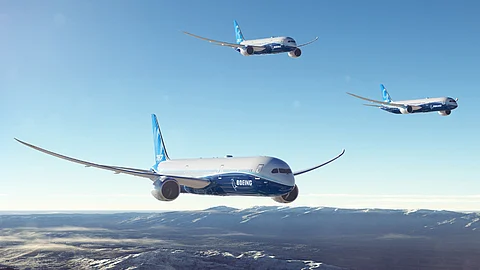
- Destinations
- Experiences
- Stay
- What's new
- Celebrating People
- Responsible Tourism
- CampaignsCampaigns
- Subscribe
- Buy Now

The Air India plane crash on Thursday, June 12, is putting a renewed spotlight on Boeing, the manufacturer of the 787-8 Dreamliner aircraft that crashed in the western Indian city of Ahmedabad with 242 passengers and crew on board. Only one passenger has survived.
Boeing says the 787-8 is the aviation industry's “best-selling passenger wide-body of all time,” carrying more than one billion passengers since it was first delivered to airlines in 2011.
What caused the crash remains unclear, and the 787-8 Dreamliner has generally had a good safety record. American safety officials said they are heading to India to assist in the investigation of the accident.
Boeing said it is in contact with Air India about the crash and stands “ready to support them. Our thoughts are with the passengers, crew, first responders and all affected.”
Outlook Traveller explains the design, operational capabilities and safety record of the 787-8 Dreamliner in light of the tragedy.
The Boeing 787 Dreamliner has a lighter and robust composite structure that enables airlines to reduce fuel use by up to 25 per cent compared to the airplanes it replaces. External features include a smooth nose contour, raked wingtips and engine nacelles with noise-reducing chevrons that reduce drag and improve airflow.
Among 787 flight systems, a key change from traditional airliners is the electrical architecture. It replaces bleed air—air bled from the engine compressor stage and used for various purposes such as anti-ice, pressurisation and air conditioning—with electrically powered compressors and four of six hydraulic power sources with electrically-driven pumps. Boeing says that this system extracts 35 per cent less power from the engines, allowing increased thrust and improved fuel efficiency.
The 787 is the first commercial aircraft to have an airframe primarily made of carbon fibre reinforced polymer (CFRP). These materials have a higher strength-to-weight ratio than conventional aluminum structural materials, which contributes significantly to the 787's weight savings.
With a typical capacity of 248 passengers and a range of 7,305 nautical miles (13,529 km), the 787−8 variant is the base model of the 787 family and was the first to enter service in 2011.
Compared to its larger siblings—the 787-9 and 787-10—the 787-8 balances long-haul capabilities with smaller capacity. Passengers flying on the 787-8 enjoy several comfort-focused features, such as larger windows with electronic dimming, higher humidity levels and improved air filtration—all designed to ease long-haul travel discomfort and jet lag.
The 787 Dreamliner is used by top global airlines, including British Airways, Qatar Airways, Etihad Airways, United Airlines, Japan Airlines and Air India. There are more than 1,100 Dreamliners operating across the globe today, with the aircraft having been in operation for an average of 7.5 years.
The Air India incident represents the first crash of a 787-8 Dreamliner, although the aircraft has been involved in previous investigations.
The Federal Aviation Administration (FAA) last year ordered inspections of the cockpit seats on the Dreamliners after one of the jets went into a dive when the captain's seat lurched forward without warning and disconnected the plane's autopilot system, according to media reports.
In 2024, a whistleblower's allegations prompted the FAA to investigate his claims about assembly defects in the company's 787 Dreamliner. Sam Salehpour, a Boeing quality engineer, said “he observed shortcuts taken by Boeing” during assembly of the Dreamliner, “resulting in drilling debris left in interfaces and deformation of composite material.”
Even before last year, the 787 Dreamliner was plagued with issues soon after it launched. A Japan Airlines (JAL) 787 experienced a fuel leak on January 8, 2013, and its flight from Boston was cancelled. The next day, United Airlines reported a problem in one of its six 787s with the wiring near the main batteries. Fuel leaks also occurred on January 11, 2013 and on January 13, 2013, at Narita International Airport in Tokyo. The aircraft reportedly was the same one that had a fuel leak on January 8.
On June 18, 2021, a British Airways 787-8 spontaneously suffered a nose gear collapse at London Heathrow Airport while stationary. Photographs circulated after the incident showed the aircraft resting on its nose, with some damage to its nose gear door. No passengers were onboard.
For now, it is unclear what caused the Air India crash. The plane had logged more than 41,000 hours of flying time, with almost 8,000 takeoffs and landings, according to Cirium, an aviation analytics firm. Air India operates 190 aircraft, with an average age of 8.4 years, Cirium said.
(With inputs from multiple news reports)
